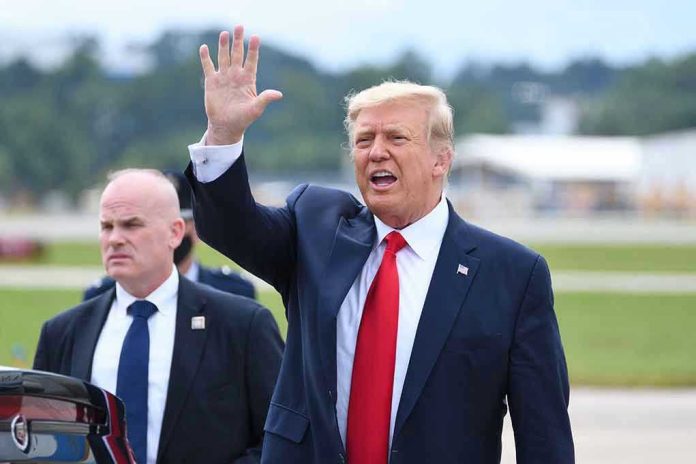
When Donald Trump extends an olive branch, even his fiercest critics pause, if only to check which hand holds the thorns.
Story Snapshot
- Donald Trump signals willingness to collaborate with New York City’s newly elected mayor, Zohran Mamdani.
- Trump’s pivot comes after publicly opposing Mamdani’s election bid.
- The meeting, if it happens, may reshape political alliances in the city’s fractious landscape.
- Both leaders stand to gain—or lose—depending on how this unexpected overture plays out.
Trump’s Calculated Overture to Mamdani
Donald Trump, never a stranger to dramatic turnarounds, declared on Sunday his intention to meet with Zohran Mamdani, the newly elected mayor of New York City. Just days earlier, Trump had sought to rally opposition against Mamdani, a progressive candidate with little in common with Trump’s base. The reversal leaves political observers wondering: is Trump playing chess or simply rewriting the playbook as he goes?
Trump’s olive branch appears less about policy agreement than pragmatism. New York is a city Trump knows well—its power, its pitfalls, and, above all, its penchant for spectacle. By reaching out to Mamdani, Trump signals that he’s willing to negotiate, even with opponents who represent the city’s shifting demographics and political tides. For a man whose brand is built on dominance, this gesture hints at an awareness that bridge-building, even if temporary, can be a winning tactic.
Mamdani’s Mandate and the Trump Factor
Zohran Mamdani, elected on November 4, owes his victory to a coalition of young, diverse, and left-leaning voters. His rise frustrated conservative hopes in the city, especially after Trump made a point of targeting Mamdani’s campaign in the final weeks. Mamdani’s platform—focused on housing justice, economic equity, and police reform—stands at odds with Trump-era policy preferences.
Yet, the realities of governance often require more than campaign slogans. Mamdani faces enormous challenges: a city budget under strain, rising public safety concerns, and a skeptical business community. Trump’s offer to “work something out” could provide Mamdani a chance to secure resources or, at least, avoid outright confrontation with influential interests. For Mamdani, the meeting is both a risk and an opportunity to show independence without alienating his base.
What’s in It for Trump?
Trump’s pivot is not without self-interest. Having lost ground in New York City, he sees an opening to reassert relevance. By engaging with Mamdani, Trump positions himself as a dealmaker open to bipartisan solutions—an image that could appeal to moderate voters or disaffected Democrats. If the meeting succeeds, Trump claims credit for pragmatism; if it fails, he can blame Mamdani’s “radical” stance, reinforcing his narrative with core supporters.
For Trump, the stakes are reputational. Collaboration with Mamdani is a test: can he influence policy in a city that has long resisted his brand of politics? Can he demonstrate flexibility, or will this be seen as political theater? The outcome may set the tone for Trump’s future engagements with urban leaders across the country.
Risks and Rewards for Both Leaders
Both Trump and Mamdani enter this prospective meeting with much to gain and more to lose. For Mamdani, association with Trump risks alienating progressives who view any engagement as capitulation. For Trump, a failed negotiation could reinforce his outsider status and embolden critics who doubt his sincerity.
The story’s next chapter will be written not in press releases, but in the tangible outcomes that follow. Will Trump and Mamdani find common ground on infrastructure, public safety, or economic recovery? Or will their vastly different visions for New York City prove irreconcilable? The city’s residents—often weary of political grandstanding—will judge the results by what changes in their daily lives.
Sources:
Donald Trump Working on Zohran Mamdani Meeting







